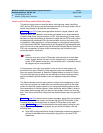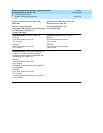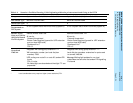
MERLIN LEGEND Communications System Release 6.1
Network Reference
555-661-150
Issue 1
August 1998
Call-Handling Scenarios
Page 2-21Network Configuration Scenarios
2
■ If a call should be routed over a non-local system for toll-saving purposes,
the local ARS routing directs it to a tandem PRI trunk pool, prepending the
ARS access code. Local PSTN pools are only used as a fallback option,
and more restrictive, higher-numbered FRLs are assigned to these ARS
routes. Voice extensions can use the Automatic or Selective Callback
feature to queue for the first route when other routes are either busy or
unavailable because of FRL restrictions.
NOTE:
Even though the ARS access codes for the two systems match, calls
with area codes defined in ARS that are routed via private network
trunks still require prepending of the non-local system’s ARS code.
The prepended ARS access code signals the non-local system to
handle the call using ARS.
■ Local FRL extension restrictions apply to local ARS calls. Before a call is
routed over tandem trunks, the FRL for that tandem trunk route is checked
against the call originator’s extension FRL. The non-local system’s ARS
feature subsequently analyzes the call for routing by comparing the FRL for
the default COR for non-tie trunks (tandem PRI) with the FRL assigned to
the local ARS route. The default COR FRL is set to 3. The route FRL must
be equal to or lower than 3 in order for the call to go through.
■ In Release 6.1 and later systems, when planning for centralized VMS/AA,
an integrated VMI calling group must be created at System A. This
integrated VMI calling group is used to route calls to the centralized
VMS/AA installed on System B. Refer to “Implementation of Centralized
VMS/AA” in Chapter 5 for implementation details.


















